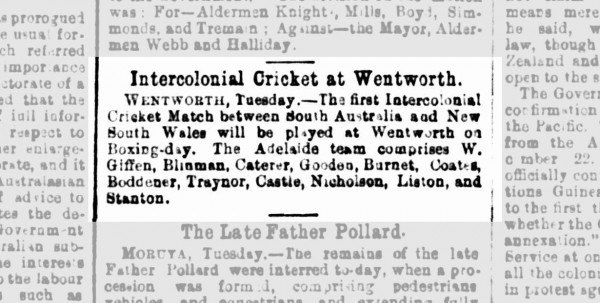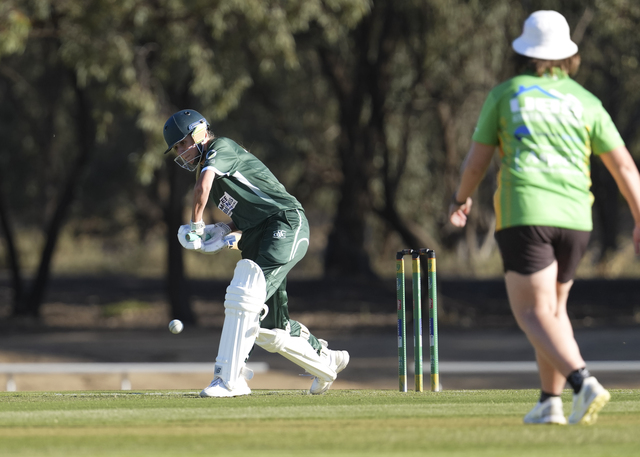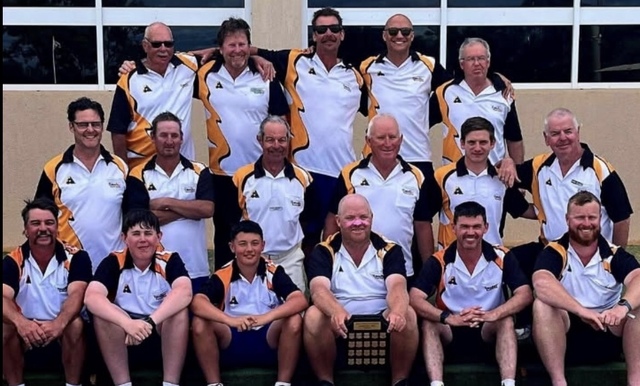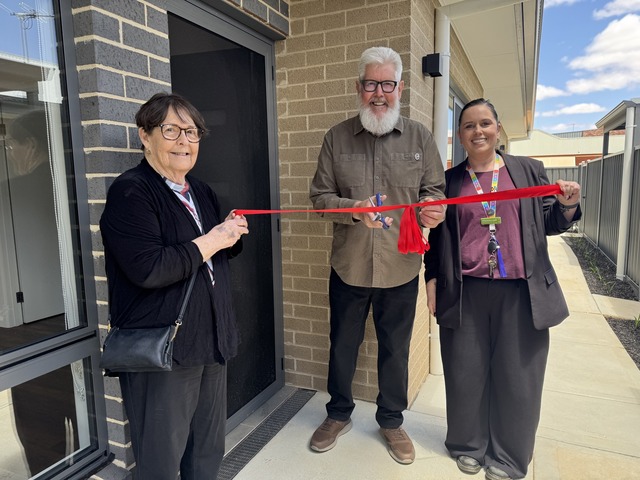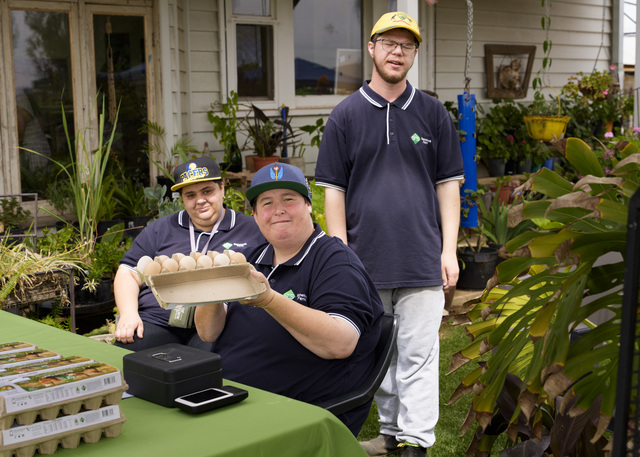IT’S been a year of historical significance for Coomealla Wentworth Cricket Club, with this week marking 140 years since the first inter-colony match between a New South Wales and South Australian side, which was held at Wentworth.
That follows the 160th anniversary back in February of the club’s first match, which happened when the town was just five-years-old.
Twenty years after the club’s first game in February of 1864 it would host the first SA-NSW inter-colony match – South Australian Federals versus Wentworth Cricket Club – which would be noted in Adelaide, Sydney and Newcastle’s press for its significance.
The Boxing Day clash would also feature for the Federals an Australian Cricket Hall of Famer, George Giffen, who captained Australia in the 1894-95 Ashes series.
It was the perfect location for the first clash between neighbouring colony sides, with the South Australian team arriving via the paddle steamer Gem on Boxing Day morning in 1884.
“The Federal cricketers were met on the wharf by the Mayor, Mr Holding, and a number of inhabitants,” the Adelaide Evening Journal reported.
“The party then adjourned to Simpson’s hotel where the health of the team was proposed by the Mayor, who extended a hearty welcome to the first South Australian team that had visited New South Wales.”
The game then got underway.
The smaller colony sent a side that included Giffen, who was the first Australian to record 10,000 runs and 500 wickets in first-class cricket, and who dominated the match.
The South Australians walloped their NSW rivals on the matting pitch, with Wentworth’s three innings still short of Adelaide’s one (Giffen top-scored with 64).
“Chatto, the captain of the local team, won the toss and elected to bat but could make no resistance against the bowling of Giffen and Caterer and the 15 were disposed of for 36” while Adelaide posted 182, the Journal reported.
A banquet followed the game and the South Australians departed the next day, except for six of the 15-strong squad who decided to spend another week enjoying Wentworth.
The game was believed to have been held near present-day Wentworth Health Service, about a kilometre from the current McLeod Oval.
However after the “drubbing”, as the press described it, the game of cricket went into a lull in southwest NSW with Wentworth Cricket Club reportedly refusing an offer to host another game a year later.
Twenty years earlier the club’s first game occurred in February while the town was in its infancy.
The cricket club was formed as much for a social fix as a sporting fix as it was the first “club or society of any kind” to form in the town, a South Australian Advertiser correspondent reported, “owing doubtless to the nomadic character of our townsmen”.
The club was renowned for its balls, dances and games activities for children – and was intentionally situated close to the town’s hotels.
“Play commenced at noon by Mr Oliver’s team going to the wickets. At two o’clock the company adjourned to Gunn’s Hotel, where a most sumptuous luncheon awaited them,” The South Australian Register said at the time.
After the game “the cricketers and their friends assembled at McGeorge’s Hotel, when 30 gentlemen sat down to dinner, provided by Mr McGeorge in his usual good style.”
Current Coomealla Wentworth Cricket Club president Phil Baird said the club tried to uphold the grand social ambitions of 19th century cricket, but that mid-game excursions to the hotel were no longer permitted.
“Coming out of COVID things were pretty slow on the social front and certainly in the last couple of years we’ve been working really hard on the social side of things,” he said.
“We had the return after a few years of our back-to-front draw this year which went really well in November, we have a usual Christmas parties, and we got over a 100 people at our end-of-season presentation night at the Coomealla Memorial Sporting Club, our major sponsor,” he said.
“We’ve also had games nights, trivia nights and other initiatives to bring the junior and senior sides closer together the last year or two, to create that connection.
“We’ve got a good committee and it’s going really well.”
And the current president said there were still strong connections to SA cricket at Coomealla Wentworth, with the state drawing representative juniors and over-age players from the Sunraysia, Barrier and Riverland regions.“Four or five of our under-14 and under-12 boys are heading over there for representative competition and we’ve also some a couple of over-50s playing in the South Australia side,” Baird said.
“We’re a NSW club in a Victorian association with South Australian representatives, we’ve got the best of three worlds.”
In the 160 years since the first match, the cricket club has moved and was once based at Curlwaa (which now has its own standalone club), and of course most recently merged with Coomealla in the late 1990s with its main premises there, and consequently documentation from the era is hard to find.
Baird said there had been renewed interest in the club’s long history, but an attempt to connect with NSW and SA cricket authorities this year had got tied up in bureaucracy.
“We did a bit of works six months ago but nothing got up,” he said.
“We’re thinking of doing something over the next 12 to 18 months or maybe we wait for the big (150th) anniversary.
“But we really appreciate the history and significance of it for the two states as well as for Wentworth itself.”
One aspect of 19th century cricket the club could re-invigorate were the games between married men and unmarried men, common between 1829 and 1892, with at least one recorded at Wentworth Cricket Club.
Laughing, Baird struggled to say who he would back at the current club.
“There’s a bit of a trend not to get married early even though you might have a stable partnership. I’d nearly have to go with the unmarried men,” he said. “It would be a fun game though.”
As The South Australian Advertiser predicted in the 1863/64 season, the club has “provided a means of recreation that will doubtless prove a great advantage to the corporeal frames of all those who partake of it.”

